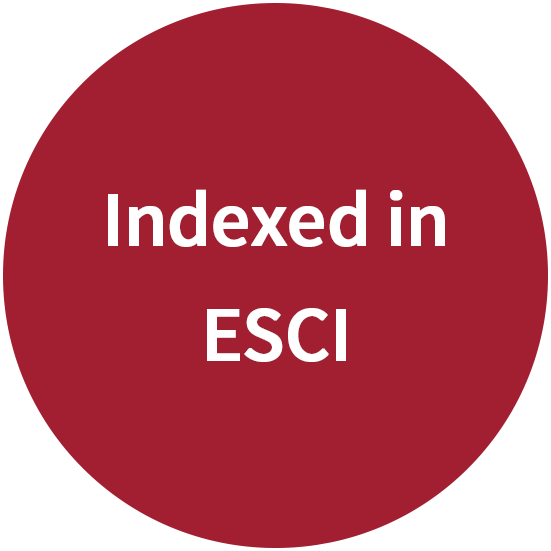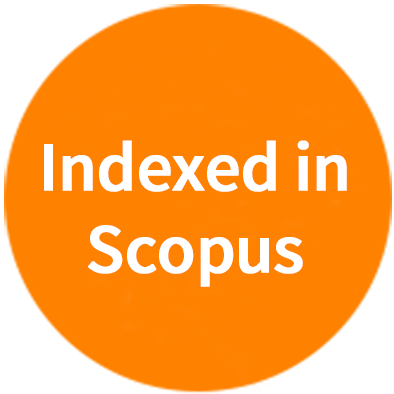REFERENCES
1. Kok K, Zwiers KC, Boot RG, Overkleeft HS, Aerts JMFG, Artola M. Fabry disease: molecular basis, pathophysiology, diagnostics and potential therapeutic directions. Biomolecules 2021;11:271.
2. Ryckman AE, Brockhausen I, Walia JS. Metabolism of glycosphingolipids and their role in the pathophysiology of lysosomal storage disorders. Int J Mol Sci 2020;21:6881.
3. Perretta F, Antongiovanni N, Jaurretche S. Major organic involvement in women with fabry disease in argentina. Sci World J 2018;2018:6515613.
4. Ramaswami U, Whybra C, Parini R, et al. Clinical manifestations of Fabry disease in children: data from the Fabry outcome survey. Acta Paediatr 2006;95:86-92.
5. Caputo F, Lungaro L, Galdi A, et al. Gastrointestinal involvement in anderson-Fabry disease: a narrative review. Int J Environ Res Public Health 2021;18:3320.
6. Pieroni M, Moon JC, Arbustini E, et al. Cardiac involvement in Fabry disease: JACC review topic of the week. J Am Coll Cardiol 2021;77:922-36.
7. Silva CAB, Moura-Neto JA, Dos Reis MA, Vieira Neto OM, Barreto FC. Renal manifestations of Fabry disease: a narrative review. Can J Kidney Health Dis 2021;8:2054358120985627.
8. Mishra V, Banerjee A, Gandhi AB, et al. Stroke and Fabry disease: a review of literature. Cureus 2020;12:e12083.
10. Kant S, Atta MG. Therapeutic advances in Fabry disease: the future awaits. Biomed Pharmacother 2020;131:110779.
12. EMA. Elfabrio. Available from: https://www.ema.europa.eu/en/medicines/human/EPAR/elfabrio [Last accessed on 21 Jun 2024].
13. FDA. Available from: https://www.accessdata.fda.gov/drugsatfda_docs/label/2023/761161s000lbl.pdf [Last accessed on 21 Jun 2024].
15. Felis A, Whitlow M, Kraus A, Warnock DG, Wallace E. Current and investigational therapeutics for Fabry disease. Kidney Int Rep 2020;5:407-13.
16. Khan A, Barber DL, Huang J, et al. Lentivirus-mediated gene therapy for Fabry disease. Nat Commun 2021;12:1178.
17. Simonetta I, Tuttolomondo A, Daidone M, Pinto A. Biomarkers in anderson-Fabry disease. Int J Mol Sci 2020;21:8080.
18. Carnicer-Cáceres C, Arranz-Amo JA, Cea-Arestin C, et al. Biomarkers in Fabry disease. Implications for clinical diagnosis and follow-up. J Clin Med 2021;10:1664.
19. Bengtsson BA, Johansson JO, Hollak C, Linthorst G, FeldtRasmussen U. Enzyme replacement in anderson-Fabry disease. Lancet 2003;361:352.
20. Schiffmann R, Kopp JB, Austin HA 3rd, et al. Enzyme replacement therapy in Fabry disease: a randomized controlled trial. JAMA 2001;285:2743-9.
21. Eng CM, Guffon N, Wilcox WR, et al. Safety and efficacy of recombinant human alpha-galactosidase a replacement therapy in Fabry’s disease. N Engl J Med 2001;345:9-16.
22. Aerts JM, Groener JE, Kuiper S, et al. Elevated globotriaosylsphingosine is a hallmark of Fabry disease. Proc Natl Acad Sci USA 2008;105:2812-7.
23. Dupont FO, Gagnon R, Boutin M, Auray-Blais C. A metabolomic study reveals novel plasma lyso-Gb3 analogs as Fabry disease biomarkers. Curr Med Chem 2013;20:280-8.
24. Auray-Blais C, Boutin M, Gagnon R, Dupont FO, Lavoie P, Clarke JT. Urinary globotriaosylsphingosine-related biomarkers for Fabry disease targeted by metabolomics. Anal Chem 2012;84:2745-53.
25. Manwaring V, Boutin M, Auray-Blais C. A metabolomic study to identify new globotriaosylceramide-related biomarkers in the plasma of Fabry disease patients. Anal Chem 2013;85:9039-48.
26. Auray-Blais C, Boutin M. Novel Gb3 isoforms detected in urine of Fabry disease patients: a metabolomic study. Curr Med Chem 2012;19:3241-52.
27. Auray-Blais C, Lavoie P, Boutin M, et al. Biomarkers associated with clinical manifestations in Fabry disease patients with a late-onset cardiac variant mutation. Clin Chim Acta 2017;466:185-93.
28. Auray-Blais C, Blais CM, Ramaswami U, et al. Urinary biomarker investigation in children with Fabry disease using tandem mass spectrometry. Clin Chim Acta 2015;438:195-204.
29. Lavoie P, Boutin M, Auray-Blais C. Multiplex analysis of novel urinary lyso-Gb3-related biomarkers for Fabry disease by tandem mass spectrometry. Anal Chem 2013;85:1743-52.
30. Finkelstein JD. Metabolic regulatory properties of S-adenosylmethionine and S-adenosylhomocysteine. Clin Chem Lab Med 2007;45:1694-9.
31. Lohse B, Kristensen JL, Kristensen LH, et al. Inhibitors of histone demethylases. Bioorg Med Chem 2011;19:3625-36.
32. Bai HW, Shim JY, Yu J, Zhu BT. Biochemical and molecular modeling studies of the O-methylation of various endogenous and exogenous catechol substrates catalyzed by recombinant human soluble and membrane-bound catechol-O-methyltransferases. Chem Res Toxicol 2007;20:1409-25.
33. Patti GJ, Yanes O, Shriver LP, et al. Metabolomics implicates altered sphingolipids in chronic pain of neuropathic origin. Nat Chem Biol 2012;8:232-4.
34. Abaoui M, Boutin M, Lavoie P, Auray-Blais C. High-risk screening of Fabry disease: analysis of fifteen urinary methylated and non-methylated Gb3 isoforms using tandem mass spectrometry. Curr Protoc Hum Genet 2016;91:17.24.1-11.
35. Abaoui M, Boutin M, Lavoie P, Auray-Blais C. Tandem mass spectrometry multiplex analysis of methylated and non-methylated urinary Gb3 isoforms in Fabry disease patients. Clin Chim Acta 2016;452:191-8.
36. Lavoie P, Boutin M, Abaoui M, Auray-Blais C. Fabry disease biomarkers: analysis of urinary lyso-Gb3 and seven related analogs using tandem mass spectrometry. Curr Protoc Hum Genet 2016;90:17.22.1-12.
37. Boutin M, Lavoie P, Abaoui M, Auray-Blais C. Tandem mass spectrometry quantitation of lyso-Gb3 and six related analogs in plasma for Fabry disease patients. Curr Protoc Hum Genet 2016;90:17.23.1-9.
38. Desnick RJ, Allen KY, Desnick SJ, Raman MK, Bernlohr RW, Krivit W. Fabry’s disease: enzymatic diagnosis of hemizygotes and heterozygotes. Alpha-galactosidase activities in plasma, serum, urine, and leukocytes. J Lab Clin Med 1973;81:157-71.
39. Thurberg BL, Rennke H, Colvin RB, et al. Globotriaosylceramide accumulation in the Fabry kidney is cleared from multiple cell types after enzyme replacement therapy. Kidney Int 2002;62:1933-46.
40. Chatterjee S, Gupta P, Pyeritz RE, Kwiterovich PO Jr. Immunohistochemical localization of glycosphingolipid in urinary renal tubular cells in Fabry’s disease. Am J Clin Pathol 1984;82:24-8.
41. Schiffmann R, Waldek S, Benigni A, Auray-Blais C. Biomarkers of Fabry disease nephropathy. Clin J Am Soc Nephrol 2010;5:360-4.
42. Fall B, Scott CR, Mauer M, et al. Urinary podocyte loss is increased in patients with Fabry disease and correlates with clinical severity of Fabry nephropathy. PLoS One 2016;11:e0168346.
43. Najafian B, Tøndel C, Svarstad E, Gubler MC, Oliveira JP, Mauer M. Accumulation of Globotriaosylceramide in podocytes in Fabry nephropathy is associated with progressive podocyte loss. J Am Soc Nephrol 2020;31:865-75.
44. Shiga T, Tsukimura T, Namai Y, Togawa T, Sakuraba H. Comparative urinary globotriaosylceramide analysis by thin-layer chromatography-immunostaining and liquid chromatography-tandem mass spectrometry in patients with Fabry disease. Mol Genet Metab Rep 2021;29:100804.
45. Moura AP, Hammerschmidt T, Deon M, Giugliani R, Vargas CR. Investigation of correlation of urinary globotriaosylceramide (Gb3) levels with markers of renal function in patients with Fabry disease. Clin Chim Acta 2018;478:62-7.
46. Vedder AC, Linthorst GE, van Breemen MJ, et al. The Dutch Fabry cohort: diversity of clinical manifestations and Gb3 levels. J Inherit Metab Dis 2007;30:68-78.
47. Nowak A, Mechtler TP, Hornemann T, et al. Genotype, phenotype and disease severity reflected by serum LysoGb3 levels in patients with Fabry disease. Mol Genet Metab 2018;123:148-53.
48. Nowak A, Beuschlein F, Sivasubramaniam V, Kasper D, Warnock DG. Lyso-Gb3 associates with adverse long-term outcome in patients with Fabry disease. J Med Genet 2022;59:287-93.
49. Niemann M, Rolfs A, Störk S, et al. Gene mutations versus clinically relevant phenotypes: lyso-Gb3 defines Fabry disease. Circ Cardiovasc Genet 2014;7:8-16.
50. Nikolaenko V, Warnock DG, Mills K, Heywood WE. Elucidating the toxic effect and disease mechanisms associated with Lyso-Gb3 in Fabry disease. Hum Mol Genet 2023;32:2464-72.
51. Hwang AR, Park S, Woo CH. Lyso-globotriaosylsphingosine induces endothelial dysfunction via autophagy-dependent regulation of necroptosis. Korean J Physiol Pharmacol 2023;27:231-40.
52. Sanchez-Niño MD, Sanz AB, Carrasco S, et al. Globotriaosylsphingosine actions on human glomerular podocytes: implications for Fabry nephropathy. Nephrol Dial Transplant 2011;26:1797-802.
53. Choi L, Vernon J, Kopach O, et al. The Fabry disease-associated lipid Lyso-Gb3 enhances voltage-gated calcium currents in sensory neurons and causes pain. Neurosci Lett 2015;594:163-8.
54. van der Veen SJ, Sayed ME, Hollak CEM, et al. Early risk stratification for natural disease course in Fabry patients using plasma globotriaosylsphingosine levels. Clin J Am Soc Nephrol 2023;18:1272-82.
55. Ouyang Y, Zhang W, Zhao Z, et al. Globotriaosylsphingosine improves risk stratification of kidney progression in Fabry disease patients. Clin Chim Acta 2024;556:117851.
56. Duro G, Zizzo C, Cammarata G, et al. Mutations in the GLA gene and LysoGb3: is it really anderson-Fabry disease? Int J Mol Sci 2018;19:3726.
57. Ferreira S, Auray-Blais C, Boutin M, et al. Variations in the GLA gene correlate with globotriaosylceramide and globotriaosylsphingosine analog levels in urine and plasma. Clin Chim Acta 2015;447:96-104.








